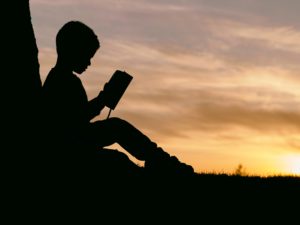Goals

Brief description of the issue
Differences between boys and girls’ school success are more easily visible in reading and writing skills than in other school subjects. The gap we start to see at the beginning of the elementary level is still present in high school and is even widening in terms of reading skills (UQAR, 2007). Yet, reading is an essential prerequisite for success and retention in school. To close this gap, we have to cultivate an interest in reading from the beginning of the elementary level, and combat gender stereotypes portraying reading as a female-only activity.
Even today, boys still perceive reading as a female activity (Sokal, 2002), their mothers being the ones reading stories to them more often than fathers do, and reading for their own pleasure than men do. As boys are very careful of not being identified to female realities, these gender stereotypes encourage them to insufficiently develop this essential skill for school success (Point de match, 2014). A team of researchers from UQAR led, between 2006 and 2010, a research-action project in the Phares school board that aimed at developing an interest in reading with boys at risk of failing at school. The positive impacts this project had on boys’ reading habits lead to think that it could be reproduced in a variety of places. Here is a step-by-step procedure to set your own father-and-son (or father-and-child) reading circles.
1. Recruitment
Using letters, phone calls and preparatory meetings, introduce reading circles to fathers as a fun activity generating precious father-and-son moments to recruit a maximum of 12 participants per group (6 father-and-son duos).
2. First preparatory meeting
Organize a first meeting, where only fathers (without their sons) are invited, to introduce them to the project more in depth, assuage their concerns and to get to know their reading habits and type of written medium they would prefer. This meeting must also allow you to note when fathers are available and to organize the calendar accordingly.
3. Second preparatory meeting
This is a meeting gathering fathers and sons. With the suggestions made by fathers at the last meeting, bring books, magazines, etc. that might be of interest for fathers as much as for sons. If the books chosen for the first round can be more “stereotypical” (for example, sports and hunting & fishing magazines, the Auto Guide, etc.), an effort must be made to progressively suggest books with various models of masculinity. The main goal of the second preparatory meeting is to get participants to choose a book and then to give them a “reading mission” they must do at home. Missions must, above everything, help participants enjoy reading. Here are a few examples of the missions used in the first project:
- Create a hunting and fishing quiz;
- Associate your father or your son to an animal from a book about mammals;
- A “Spot the differences” game comparing a comic book to a movie;
- Prepare a secret question for your father or your son about a world’s wonder.
4. Sharing meetings
Every week (or any other period you chose between meetings), a sharing meeting takes place.
- These meetings must start with a welcoming period, where participants are invited to talk about how their reading activities are going at home. It is the time for the facilitator to make sure the discussions are happening in a respectful climate and that everyone feels comfortable to express himself.
- Participants are then split into groups of two or three father-and-son couples to talk about the mission they received during the last meeting.
- Participants then come back together to share their experience and provide feedback to improve the reading circles. The meeting ends with the choice of the next reading subject among three propositions from the facilitator. These suggestions must take into account the discussions and feedback gathered from the last meeting.
The number of meetings depends on the interest of the participants. Missions and reading subjects must really adapt to participating fathers and sons’ interests so that everyone is having fun.
References
BOYER, Marie-Christine (2009). La lecture et l’écriture chez les garçons… de A à Z. Ministère de l’Éducation, du Loisir et du Sport, Québec, 33 pages. Accessible at: http://www.education.gouv.qc.ca/fileadmin/site_web/documents/PSG/statistiques_info_decisionnelle/LaLectureEtLEcritureChezLesGarcons_DeAaZ.pdf
JEAN, Pauline (s.d.). “Cercles de lecture pères-fils”, Le Monde alphabétique, pp. 22-24, accessible at: http://bv.cdeacf.ca/documents/PDF/rayonalpha/mondealpha/ma21/ma21g.pdf
POINT DE MATCH (2014). “Associer le plaisir de lire au plaisir de bouger!”, Une école montréalaise pour tous, 16 pages.
SOKAL, Laura (2002). “On cherche de l’aide : les garçons et la lecture”, Interaction, vol. 15, n° 4, hiver 2002, p. 13-14, accessible at: www.Idac-taac.ca/Research/boys-reading-f.asp.
